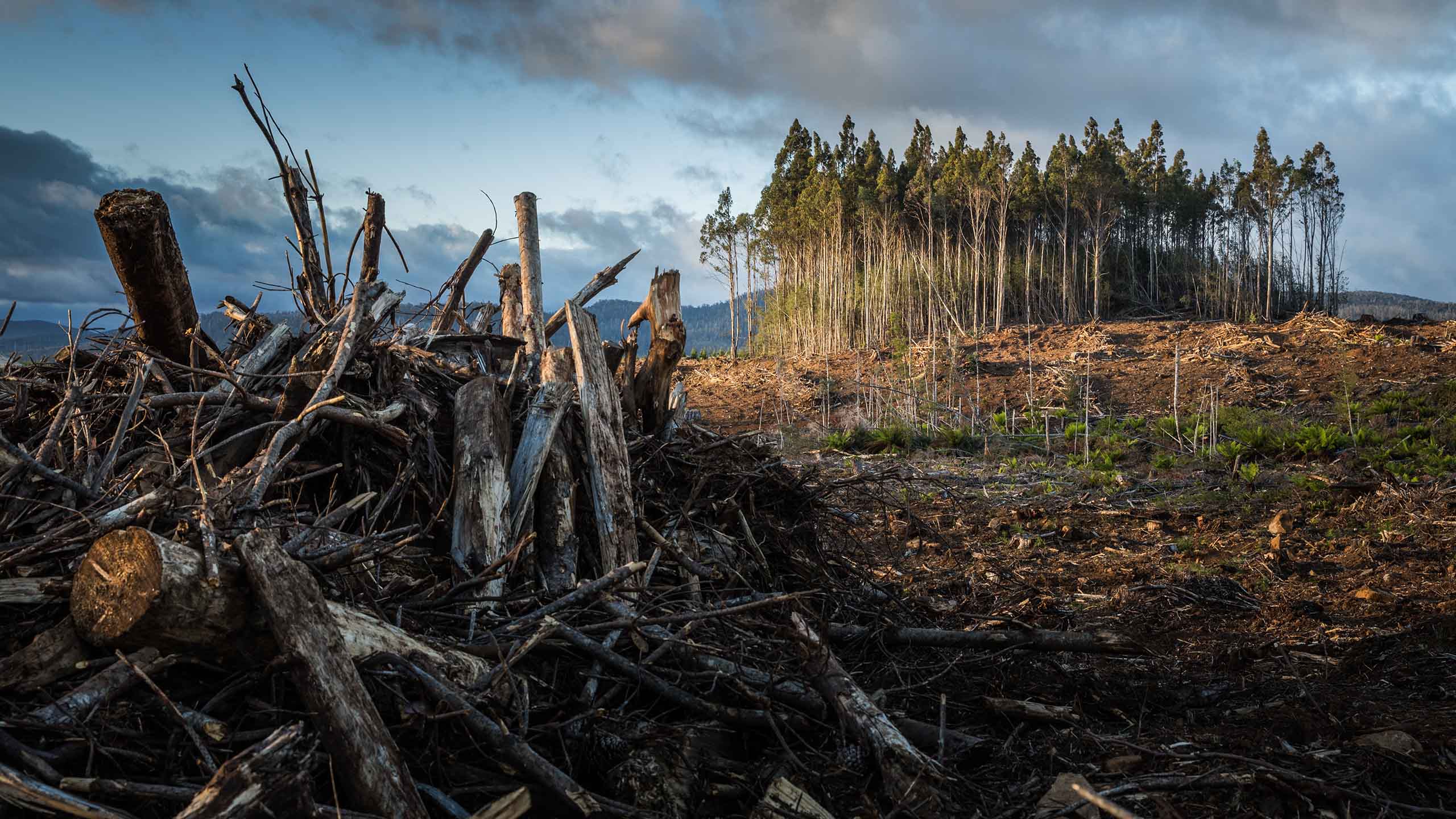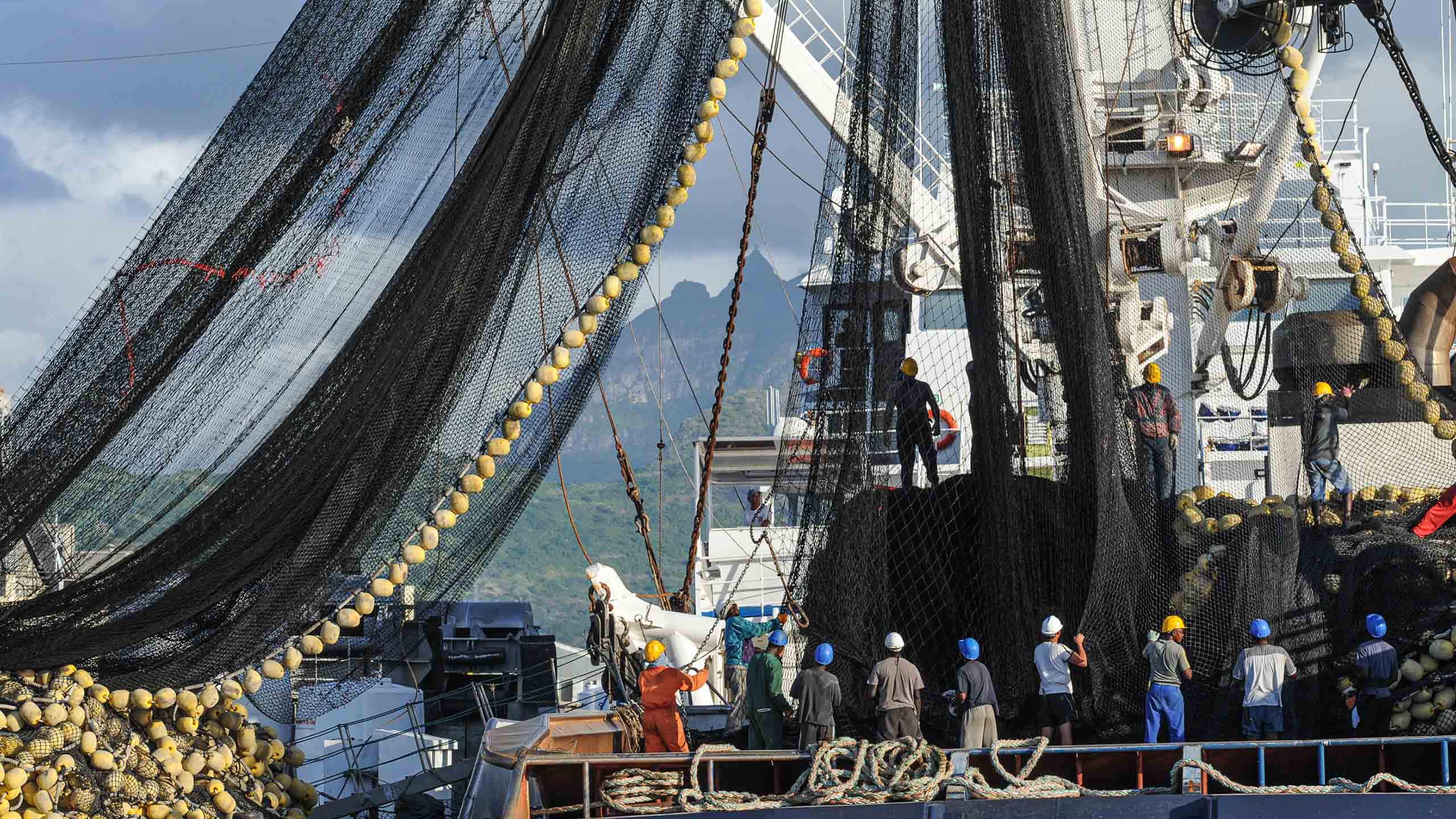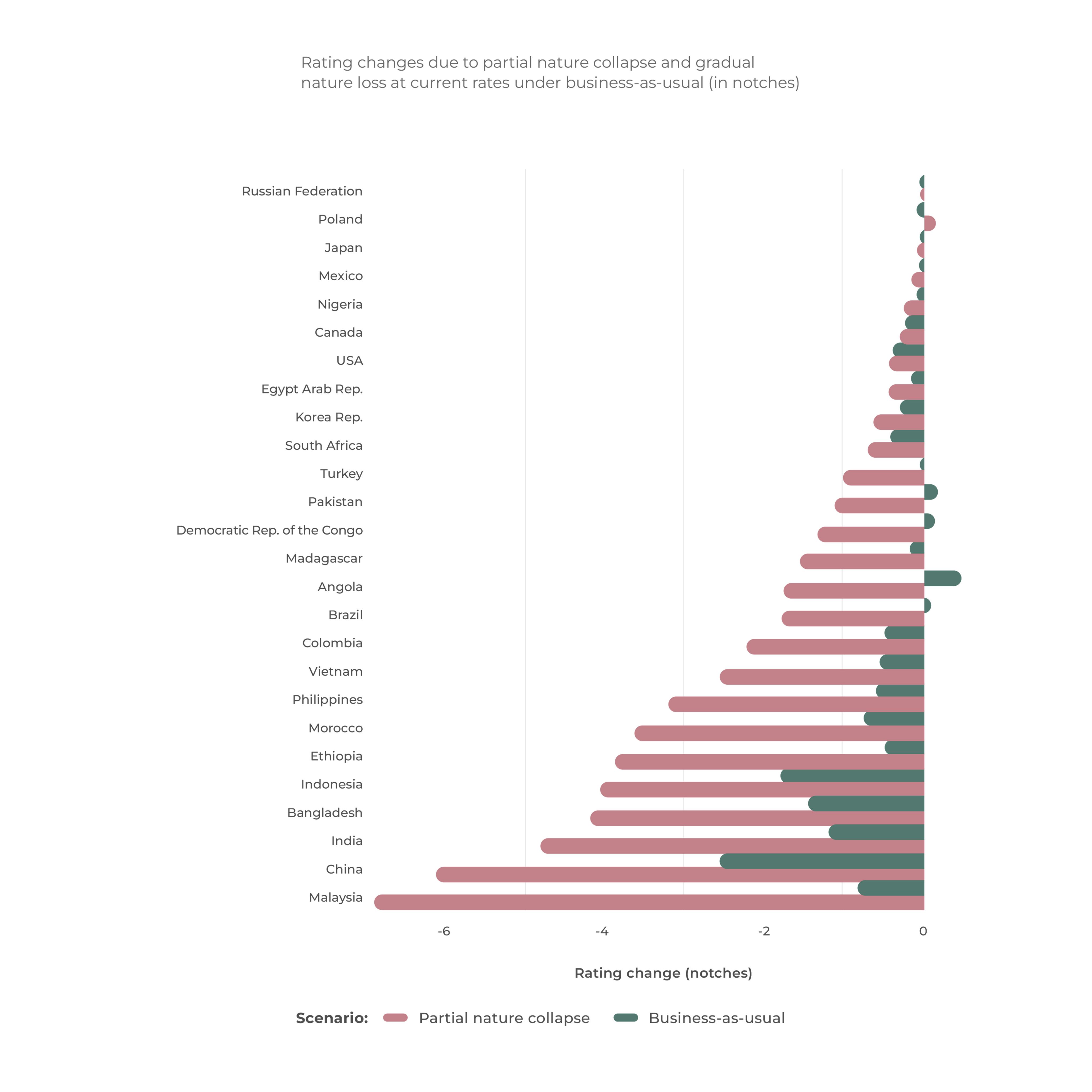Loss of nature is pushing nations toward credit downgrades and 'bankruptcy'

The world's first biodiversity-adjusted sovereign credit ratings shows how ecological destruction affects public finances – driving downgrades, debt crises and soaring borrowing costs, according to a team of economists led by Cambridge University.
A new report suggests that loss of plant and animal species may already be set to cause major sovereign downgrades, with China and Indonesia on course to drop two notches as early as 2030 under a business-as-usual scenario.
If parts of the world see a “partial ecosystems collapse” of fisheries, tropical timber production and wild pollination – as simulated by the World Bank – then more than half the 26 nations studied would face downgrades, with India falling four notches and China plummeting by six on the 20-notch scale.
Across the 26 countries, these downgrades would increase the annual interest payment on debt by up to US$53 billion a year, leaving many developing nations at significant risk of sovereign debt default – in effect, bankruptcy.
Economists say their AI-driven simulations are cautious – only covering fisheries, timber and pollinators, while in reality nature loss degrades everything from human health to farmable soil – as risk from biodiversity loss is extremely difficult to quantify, and considered a “Holy Grail of environmental finance”.
Sovereign ratings assess the creditworthiness of nations, covering over US$66 trillion in sovereign debt. The agencies behind these ratings act as gatekeepers to global capital.
Currently, agencies such as Moody’s and Standard & Poor’s assess difficult-to-quantify financial risks such as possible geopolitical events, but largely ignore the economic consequences of ecological degradation.
A team of economists from the universities of Cambridge, East Anglia, Sheffield Hallam, and SOAS University of London, argue that “nature-blind” investors cannot manage risk effectively, and omitting biodiversity loss from calculations could “undermine market stability”.
“It is not just the financiers that lose out,” said lead author Dr Matthew Agarwala, from Cambridge University’s Bennett Institute for Public Policy.
“Increased sovereign risk sees markets demand higher risk premia, meaning governments – and ultimately, tax payers – pay more to borrow"
Dr Matthew Agarwala
“As nature loss reduces economic performance, it will become harder for countries to service their debt, straining government budgets and forcing them to raise taxes, cut spending, or increase inflation," said Agarwala.
"This will have grim consequences for ordinary people.”
The report, supported by the Finance for Biodiversity Initiative, is published today, and will be discussed at a public webinar in September 2022.*
Nature and biodiversity provide “ecosystem services” – from bees that pollinate crops to plants that regenerate soil and prevent flooding – the loss of which carries hefty economic costs.
“Economies reliant on ecosystems face a choice: pay now, by investing in nature, or pay later through higher borrowing costs and spiralling debt,” said study co-author Dr Matt Burke, Senior Lecturer at Sheffield Hallam University.
“The ‘pay now’ option generates long-term returns for people, business and nature. The ‘pay later’ option has significant downside risks, with little or no upside.”
Building on research published last year by the World Bank, the latest report charts the credit ratings of 26 nations across three different scenarios.
These are a halt to biodiversity loss, as well as a ‘business as usual’ scenario in which nature declines at current rates, including the loss of 46 million hectares of wilderness by 2030.
The team also looked at a “tipping point” scenario in which ecosystems suffer partial collapse, creating a 90% reduction in services across marine fishing, wild pollination, and provision of timber from tropical regions, where loss of natural forest is most acute.

Industrial fishing off the coast of Mauritius. Fisheries were one of the ecosystems featured in the new credit rating simulations.
Industrial fishing off the coast of Mauritius. Fisheries were one of the ecosystems featured in the new credit rating simulations.
Even without tipping points, current trends alone see four nations face downgraded credit ratings in the next eight years: India and Bangladesh by one notch, and China and Indonesia by two notches.
If the struggling ecosystems in the analysis actually start to collapse, more than half the study’s countries drop at least one notch, with a third falling by three or more notches.
China’s credit rating falls by six notches, creating added annual interest payments of up to $18 billion, while an already indebted corporate sector incurs an extra $20-30 billion of debt. Malaysia falls by almost seven notches, with up to $2.6 billion in additional interest payments every year.
Downgrades of four notches would hit India, Bangladesh and Indonesia, along with billions in interest, and 12 countries of the 26 in the study increase their risk of bankruptcy by more than 10%, most dramatically for Bangladesh (41%), Ethiopia (38%) and India (29%).
Six countries in the study, including Pakistan and Madagascar, would become more likely than not to default if hit by a sudden collapse of natural ecosystems.

“Developing countries are already saddled with crippling debt burdens driven by Covid-19 and soaring prices, and loss of nature will push these nations closer to the edge,” said co-author Dr Patrycja Klusak, affiliated researcher at Cambridge’s Bennett Institute and Associate Professor at the University of East Anglia.
“There is an urgent need for innovation in sovereign debt markets. Priorities include incorporating science into forward-looking risk assessments, immediate support for developing countries to avoid sovereign defaults, and using debt markets to support conservation investments.”
The researchers argue that countries protecting “biological assets” could see creditworthiness improve.
“As everywhere, the laws of demand and supply apply here as well. Diminished supply elsewhere will increase the scarcity and consequently the value of conserved natural assets,” said co-author Dr Moritz Kraemer, a former S&P chief sovereign credit officer now a Senior Fellow at the Centre for Sustainable Finance at SOAS University of London.
“Incorporating nature risk into sovereign credit ratings would create a strong incentive for governments to enhance environmental protection,” he said.
Co-author Prof Ulrich Volz, Director of the SOAS Centre for Sustainable Finance added: “Biodiversity-related risks are a material risk to economic activity and public finances. Protecting the natural habitat is not just important for nature’s sake but also crucial for safeguarding macroeconomic stability.”
“Biodiversity loss is well understood by ecologists. Satellite surveillance means land-use changes can be tracked, and loss of nature quantified. Given the size of the economic risks, the inclusion of nature into sovereign credit ratings is inevitable."
The research team was the first to produce ‘climate smart’ sovereign credit ratings, using artificial intelligence, suggesting global warming downgrades as early as 2030.
“Climate change has dominated the conversation, but demonstrating how biodiversity risk translates into market risk is the new frontier of environmental finance, and currently the greatest challenge. This first-of-its-kind study begins that quest for 26 countries,” said Simon Zadek, Chair, Finance for Biodiversity Initiative, which supported the research.
* To register for the webinar, please mail contact@f4b-initiative.net.
Images:
Top: Logging in Tasmania, by Matt Palmer
Middle: Industrial fishing off the coast of Mauritius, by Jo-Anne McArthur
